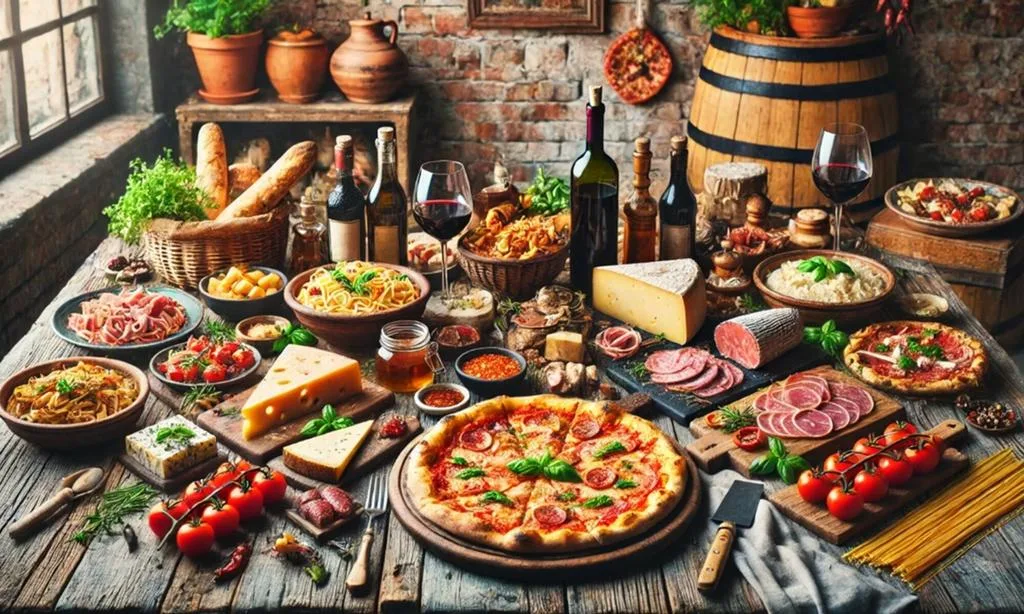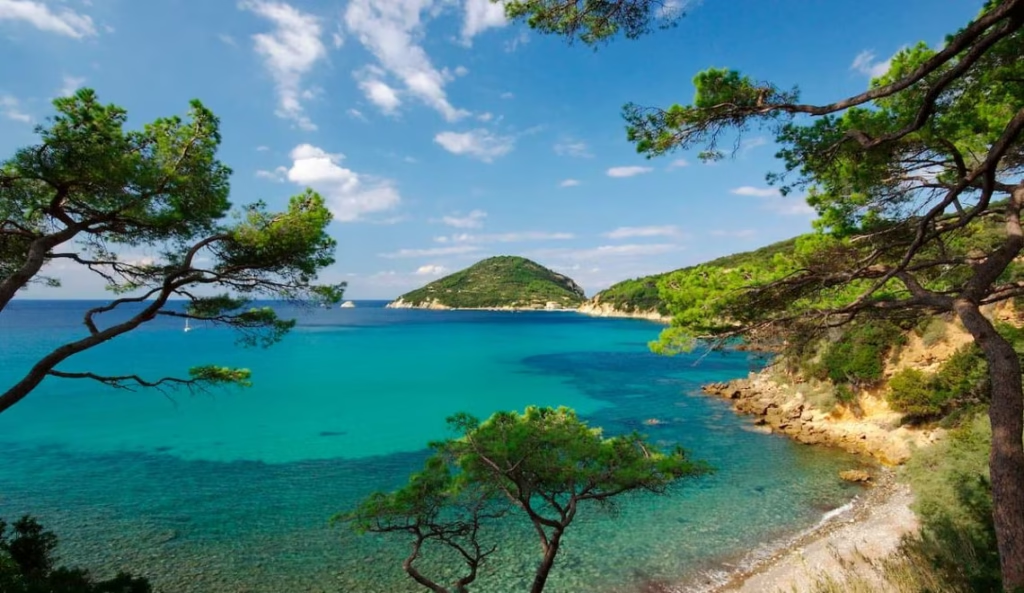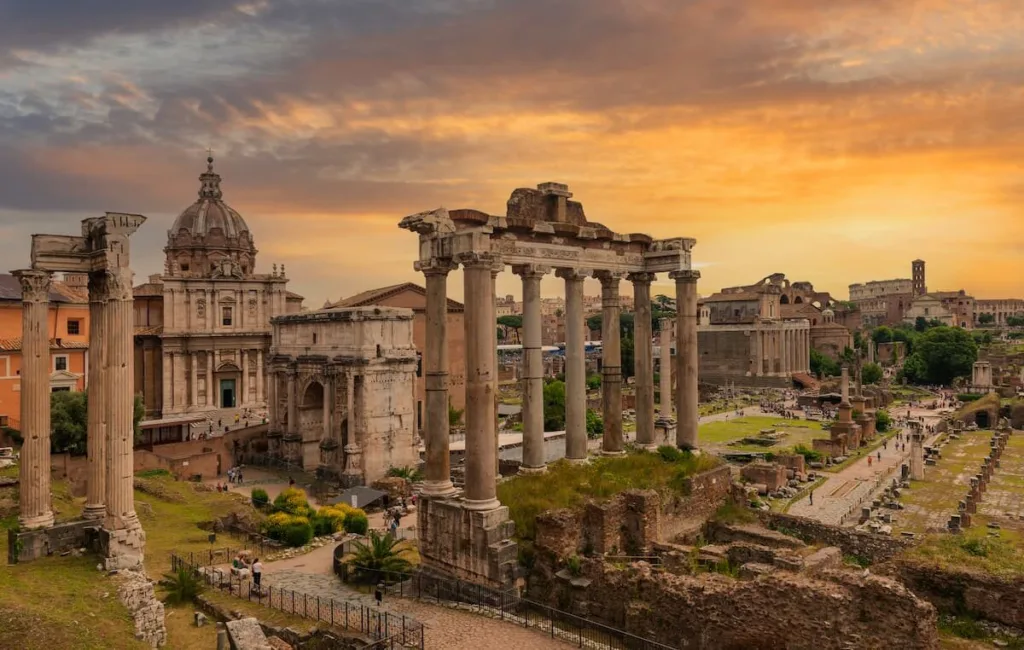Italy is a land where food and wine are inseparable from culture. Each region offers unique flavors, traditions, and stories. From lively markets and hands-on cooking classes to vineyard tastings and seasonal specialties, exploring Italy through its cuisine is a journey of discovery. This guide highlights the best experiences for travelers who want to eat, learn, and savor.

Jump to
ToggleItalian Food & Wine Highlights
Food and wine shape Italian life. Fresh produce at markets, family recipes, and wines tied to the soil all tell Italy’s story. Visitors can join this culture through tastings, classes, and seasonal events. Every experience reveals the Italian way of life, where meals mean connection and celebration.
Iconic Italian Markets
Markets are the heart of local life. They showcase produce, meats, cheeses, and street food, while also serving as social hubs. A market walk is a glimpse into daily rhythms, flavors, and traditions.
Florence – San Lorenzo Market
San Lorenzo offers porcini, pecorino, and salumi. Upstairs, Mercato Centrale serves fresh pasta, pizza, and regional snacks. Stalls display olive oils, wines, and truffle products, ideal for gifts. Outside, leather stalls mix with food stands for a lively shopping scene.
Rome – Testaccio Market
This Roman favorite blends tradition with modern food stalls. Try supplì, pizza al taglio, and seasonal artichokes. The Nuovo Mercato di Testaccio also has craft beer and wine bars. Locals shop here daily, making it a real slice of Roman life.
Palermo – Ballarò Market
Sicily’s most colorful market bursts with sizzling grills and arancine. Ballarò is the place for panelle, swordfish sandwiches, and gelato in a brioche. Vendors call out their goods, creating a vibrant soundtrack. Evening visits add atmosphere as locals gather for casual dinners.
Hands-On Culinary Experiences
Cooking classes and farm visits connect travelers with traditions. These activities are fun, educational, and memorable. Rolling pasta or pressing olives offers a direct link to centuries of practice.
Bologna – Pasta and Sauce Classes
Bologna is the home of tortellini and ragù. Classes teach visitors to roll fresh pasta and cook traditional sauces. Meals end with wine and conversation, often accompanied by recipes to take home.
Umbria – Olive Oil Tastings
In Umbria, olive mills welcome guests for tours and tastings. Sample peppery oils with bread, tomatoes, and salt while learning about DOP and IGP labels. Autumn visits may include watching olives pressed into green-gold oil.
Tuscany – Farm Lunches
Tuscan agriturismi serve rustic dishes like pappa al pomodoro and grilled meats. Lunches pair with estate wines and often start with a vineyard walk. The slow rhythm of farm dining helps guests savor the land’s bounty.
Wine Regions of Italy
Italy’s wine regions each showcase unique grapes and styles. Touring vineyards reveals winemaking artistry and the deep bond between soil and grape.
Chianti Classico (Tuscany)
Chianti Classico wines are Sangiovese-led reds with cherry, herb, and earthy notes. They must contain at least 80% Sangiovese, though many are 100%. Tastings pair well with drives through Greve, Panzano, and Radda.
Barolo and Barbaresco (Piedmont)
Made entirely from Nebbiolo, these wines are powerful with rose and truffle aromas. Book tastings in Langhe villages and enjoy slow meals with local specialties. Vineyards overlook hazelnut groves and medieval towns.
Conegliano–Valdobbiadene Prosecco & Amarone (Veneto)
The UNESCO-listed Prosecco Hills produce sparkling wines perfect for aperitivo. Nearby, Amarone offers rich depth. Made via the appassimento method of partially drying grapes, Amarone is dry yet full of dried-fruit flavor. Both areas are accessible from Venice or Verona.
Etna (Sicily)
Volcanic soils shape Etna’s wines. Expect elegant reds from Nerello Mascalese and mineral whites from Carricante. Terraced vineyards and lava-stone wineries provide dramatic settings.
Alto Adige (South Tyrol)
In the Alps, Alto Adige is famed for crisp whites and light reds. Tastings often include Gewürztraminer, Pinot Grigio, and Sauvignon. The blend of Italian and Austrian culture adds distinct flavors.
Seasonal & Artisanal Experiences
Italy’s food calendar is full of seasonal events tied to the land and climate. Seasonal foods mark celebrations and traditions, offering authentic ways to connect with local culture.
Autumn Truffle Hunts
Guides and dogs lead truffle hunts in Piedmont and Tuscany. Tastings often include tajarin pasta or eggs with fresh shavings. Festivals celebrate the harvest, peaking in October–December, with Alba White Truffle season officially from late September to January.
Modena’s Balsamic Vinegar Attics
Traditional Balsamic Vinegar of Modena DOP ages in wooden barrels for 12 to 25+ years. Visitors tour acetaie and sample drops of this prized elixir. DOP Tradizionale is made only from grape must, unlike younger IGP versions.
Parmigiano Reggiano Cheese Cellars
Morning tours show the cheesemaking process. Tastings compare 24- and 36-month wheels, though Parmigiano ages a minimum of 12 months. Rows of cheese wheels in cellars create a striking sight.
Hidden Food & Wine Gems
Beyond the classics, Italy’s lesser-known regions reveal unique flavors.
Liguria – Pesto and Seafood
Liguria birthed pesto. Markets highlight basil, pine nuts, and olive oil. The coast offers anchovies and seafood pasta.
Sardinia – Pecorino and Cannonau
Sardinia is famed for robust pecorino cheeses and Cannonau wines. Village festivals bring locals together with music and food.
Abruzzo – Rustic Mountain Cuisine
Abruzzo’s hearty dishes feature lamb skewers, saffron, and Montepulciano wines. The cuisine reflects mountain heritage and simplicity.
Practical Food & Wine Tips
Reserve tours and tastings early, especially in peak season.
Use transfers or tours on wine days to avoid driving.
At markets, order small portions and pay in cash.
Respect seasonality: truffles (autumn), grape harvest (Sept–Oct), olive pressing (late Oct–Dec).
Learn basic Italian food words for easier interaction.
Confirm opening days for markets and wineries.
FAQs
Are food markets good for children?
Yes. Markets have non-alcoholic treats, and guided tours keep kids engaged.
Do I need experience for cooking classes?
No. Most classes are beginner-friendly and provide all ingredients.
Can I visit wineries without a car?
Yes. Many tours include transfers, and some areas offer bike routes.
When is the best time for truffle hunting?
Autumn through early winter. Peak Alba White Truffle season is October to December.
What makes Traditional Balsamic Vinegar different?
DOP balsamic ages at least 12 years and is sipped like fine wine. Supermarket balsamic is often younger and blended.
Which Italian wines are easiest for beginners?
Prosecco, Lambrusco, and light Pinot Grigio are approachable and widely enjoyed.
Can I bring food and wine back home?
Yes, but check customs limits. Cheese and wine may have restrictions depending on your country.
Final Thoughts
Italy Food & Wine: Markets, Classes & Wine Regions is more than a theme. It is a way to understand the country. Every bite and sip connects you with history, landscape, and tradition. Whether browsing a market, joining a class, or tasting wine among vineyards, you step into Italy’s living culture. Extend your journey by exploring hidden gems, seasonal events, and local artisans.
Disclosure: This page may contain affiliate links. This means that we get a small commission from any purchase you make, at no additional cost to you!

